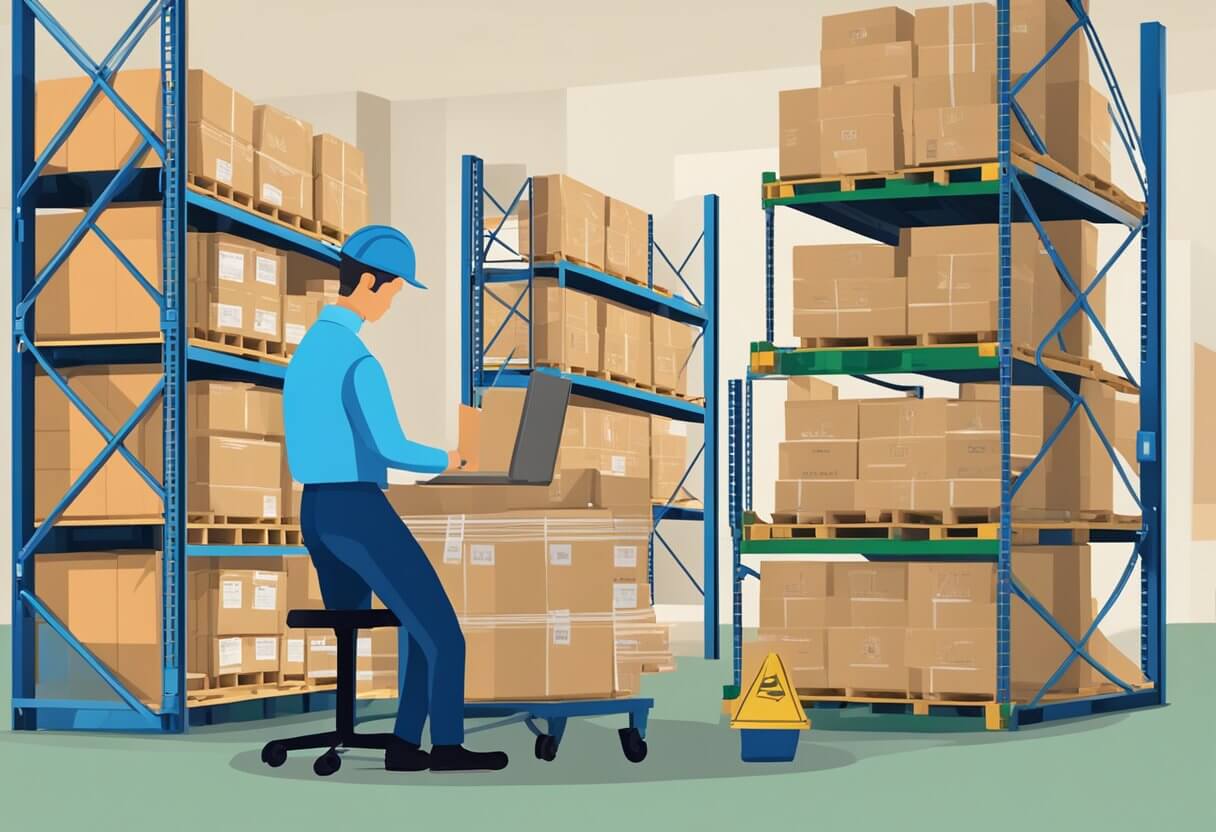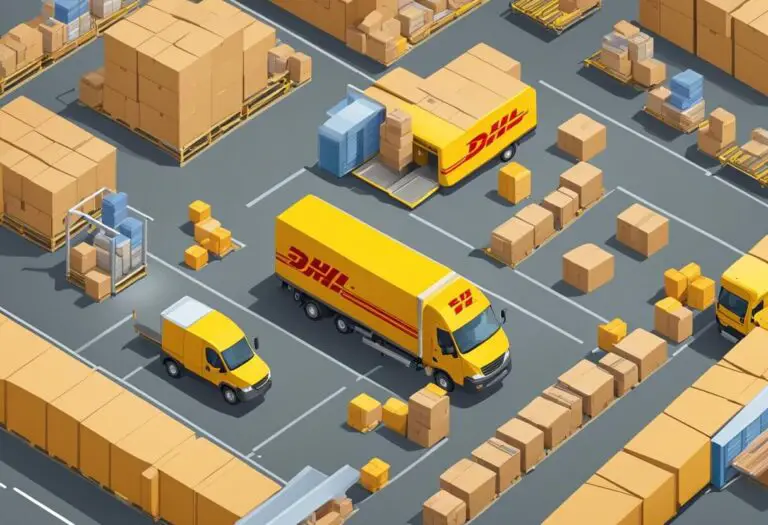Finding the Most Cost-Effective Pallet Shipping Strategy

Have you ever needed to transport large, heavy items like furniture or machinery and wondered what the most budget-friendly approach would be? What is the cheapest way to ship a pallet?
The answer lies in understanding the key factors that influence pallet shipping costs and weighing the pros and cons of different shipping methods. By optimizing your packing approach, comparing rates, and connecting with shipping specialists, you can keep expenses to a minimum.
In this comprehensive guide, we’ll cover everything you need to know, including:
- What pallets are and why they are used for freight shipping
- Determining cost factors like size, distance, transport mode
- Less than truckload (LTL) vs full truckload (FTL) tradeoffs
- Tips for saving money on your pallet freight
- Getting accurate shipping quotes
- Safely preparing pallets to avoid damage
- Working with experts to simplify the process
After reading, you’ll understand exactly how to secure budget-friendly solutions for moving your oversized cargo.
What Exactly is a Pallet and Pallet Shipping?
Before diving into costs and logistics, let’s quickly cover what pallets are and why they are commonly used to transport goods.
Pallets are flat structures made of materials like wood, plastic, or metal that provide a sturdy base for stacking and transporting products. They make moving heavy loads much simpler through the use of equipment like forklifts.
Pallet shipping refers to loading goods onto pallets (sometimes called skids) and sending the freight via truck or another method. It provides many benefits compared to box shipping for outsized items:
- Easy to transport – Compactly stacks items to efficiently use truck space
- Organized – Allows systematic storage for clear inventory
- Protected – Avoids damage by securing items tightly together
- Durable – Withstands heavy weights and forceful handling
- Reusable – Wooden and plastic pallets can serve multiple shipments
Now that you know the role of pallets, let’s explore what determines the costs of shipping them.
Key Factors That Determine Pallet Shipping Costs

While pallets streamline the transportation process, shipping them still incurs substantial expense. Many variables impact the total price:
Size and Weight
Larger and heavier pallets occupy more space in transport vehicles, require more fuel for mileage, and limit the number of total pallets per load. Heftier shipping weights mean higher rates.
Distance Shipped
The further a pallet must travel to its destination, the more expense incurred. Costs accumulate with more mileage.
Mode of Transport
Sending pallets via less than truckload (LTL), full truckload (FTL), air freight, sea freight, rail, or another method significantly impacts pricing. We’ll explain transport modes shortly.
Freight Class
Categories reflecting pallet density, ease of handling, and liability determine rankings from 50 to 500, with more costly shipping rates for higher classes.
Seasonality and Overall Demand
Transport prices fluctuate based on fuel prices, season-based demand shifts, and overall industry capacity – factors that influence carriers’ rate offerings.
Now that you know the core determinants of expenses, let’s compare two popular shipping methods.
Weighing Less Than Truckload (LTL) vs Full Truckload (FTL) Shipping
Two predominant choices exist for pallet transport: LTL vs FTL. Which offers better value depends on shipment specifics and delivery requirements.
Less Than Truckload (LTL) Shipping
As the name suggests, LTL shipping involves utilizing a truck that carries multiple companies’ freight, with each paying only for space used. Think of it as split shipping costs across supply chain partners.
Benefits of LTL transport include:
- More size/weight flexibility – Handles small loads or shipments needing under 10 linear feet of truck space
- Lower base rates compared to full truckload
- Pay only for space used rather than entire truck
Tradeoffs to consider:
- Increased handling and likelihood of damage, since loads shifted between trucks
- Less control over delivery timelines – Multiple stops extend transit time
- Higher administrative burden and complex pricing from weights, dimensions, and classes
Overall LTL works well for small- to mid-sized pallet shipments not needing special handling.
Full Truckload (FTL) Shipping
In contrast to LTL freight mixing, FTL shipping dedicates an entire truck solely to one company’s cargo from origin to destination.
Key FTL advantages:
- Faster transit with no extra loading/offloading
- Great for specialized (e.g. temperature-controlled) freight
- Lower chance of damage with less handling
- Simpler pricing – Charged by mile rather than dimensions
Tradeoffs of note:
- More expensive base rates, since you rent full truck space
- Requires enough pallets and weight to fill a truck (or paying for unused capacity)
- Pickup/delivery scheduling less flexible based on driver route
FTL shipments efficiently transport higher volumes of pallets directly end-to-end.
Analyzing size needs, pricing models, and delivery timelines helps determine if LTL or FTL best balances budget and logistics.
Tips to Save Money on Your Pallet Freight Shipping
Beyond selecting a transport mode, many tactics exist to reduce expenses:
- Compare rates – Get quotes from multiple carriers to encourage competition
- Optimize packing – Safely fit more pallets per truckload using guides/alignment tools
- Leverage backhauls – Use empty return trips to transport new loads cheaply
- Offer rate discounts – Offer carriers volume-based incentives to win better pricing
- Consolidate shipments – Coordinate recurring deliveries for better routing and capacity utilization
Saving money requires research and planning. Let’s now examine how to get accurate quotes.
How to Get Pallet Shipping Quotes and Calculate Costs?
Estimating shipment spend begins by requesting thorough quotes for informed decision-making.
- Define details – Provide origin/destination, timeline, weights, dimensions, materials
- Use calculators – Consult online tools to compare estimates across carriers
- Ask questions – Seek clarification from reps on inclusions, tax/fuel fees, accessorials
- Confirm transit times – Validate time-in-transit promises and flexibility
- Review accessorials – Understand fees for lift-gate services, residential delivery, etc.
Collecting comprehensive quotes highlights the cheapest pallet shipping solutions.
Safely Preparing Your Pallets for Transit
Getting budget pricing means nothing if freight arrives damaged. Proper packaging helps avoid this outcome.
- Select pallet material – Consider wood, plastic, metal choices based on weight thresholds
- Add padding – Insert padding, air bags, liners for shock absorption effectiveness
- Wrap securely – Utilize stretch wrap and corner boards to limit load shifting
- Label conspicuously – Clearly indicate warnings, weight distribution, load orientation
- Add protective layers – Top pallets with waterproof tarps and edge guards
Take time upfront preparing pallets to prevent time or money lost to damaged goods claims.
Connecting With a Shipping Expert for Your Pallet Needs
After evaluating quotes and transport modes, partnering with specialists simplifies execution.
Experts help you:
- Navigate cost tradeoffs across carriers and options
- Handle packaging/loading details for heavy freight
- Smoothly manage customs and documentation
- Track shipments and quickly resolve any issues
Reach out to us today to discuss your situation and evaluate possibilities. Our team stands ready to simplify your pallet shipping while optimizing spend.
Final Thoughts
We hope this overview better equips you to minimize expenses for your oversized pallet loads. Remember to compare transport modes based on pricing models and delivery urgency, leverage carrier competition with quotes from multiple partners, and work closely with specialists for seamless execution.
Implementing these tips will ensure you find the most cost-effective approach to ship pallets for your unique freight needs – whether across the country or overseas. Reach out as you evaluate options to see how we can help save money and streamline logistics success!






